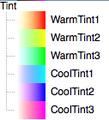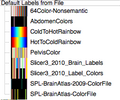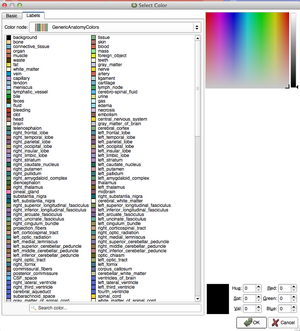Difference between revisions of "Documentation/4.0/SlicerApplication/LookupTables"
From Slicer Wiki
| Line 26: | Line 26: | ||
=Custom LUTs= | =Custom LUTs= | ||
| − | It is relatively easy to create custom LUTs by creating a table with the colors on the wiki. See | + | It is relatively easy to create custom LUTs by creating a table with the colors on the wiki. This allows to select specific names and colors when segmenting. See below for an example. |
| Line 65: | Line 65: | ||
* Standard color names and values: http://www.w3.org/TR/SVG/types.html#ColorKeywords | * Standard color names and values: http://www.w3.org/TR/SVG/types.html#ColorKeywords | ||
* [http://labelpage.halle.us/ Go here] to create a text file in Slicer LUT format. | * [http://labelpage.halle.us/ Go here] to create a text file in Slicer LUT format. | ||
| + | * A custom LUT can be loaded into Slicer like any other file. | ||
Revision as of 17:21, 18 February 2012
Home < Documentation < 4.0 < SlicerApplication < LookupTables
Overview
Slicer offers a variety of predefined lookup tables (LUT).
LUTs
Slicer ColorPicker
LUTs for Charting
Please see the separate page
Custom LUTs
It is relatively easy to create custom LUTs by creating a table with the colors on the wiki. This allows to select specific names and colors when segmenting. See below for an example.
| integer_label | text_label | color | notes |
|---|---|---|---|
| 0 | background | rgba(0,0,0,0) | |
| 1 | tissue | rgb(128,174,128) | Default label for bodily tissues |
| 2 | bone | rgb(241,214,145) | |
| 3 | skin | rgb(177,122,101) | |
| 4 | connective tissue | rgb(111,184,210) |
- Standard color names and values: http://www.w3.org/TR/SVG/types.html#ColorKeywords
- Go here to create a text file in Slicer LUT format.
- A custom LUT can be loaded into Slicer like any other file.




